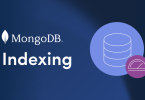What is a data pipeline?
At its most basic, a data pipeline is a series of automated steps for moving data from one or more sources to a designated destination, often transforming it along the way. Raw, disparate pieces of data enter one end, undergo processes like cleaning, restructuring and enrichment, and emerge at the other end as usable insights.
You could think of a data pipeline like an airport baggage system: Bags (data) enter the conveyor system, get scanned (validation), sorted (transformation) and routed to the correct flight (destination database). If one belt jams, everything backs up like a bottleneck in a data pipeline.
Clearing up some common data pipeline terms
Terminology in the data world can be a bit fuzzy sometimes. Let’s address a couple of common questions.
Is data pipeline the same as ETL pipeline?
No, they’re not the same. A data pipeline is an umbrella term that refers to any set of processes that move data from one system to another, which can include simple data ingestion, real-time streaming, batch processing or complex workflows.
An ETL pipeline (Extract, Transform, Load) is a specific type of data pipeline. Its main purpose is to extract data from sources, transform it into the right format and load it into a destination system like a data warehouse or database.
So, all ETL pipelines are data pipelines, but not all data pipelines are ETL pipelines. For example, a pipeline that just moves raw data without transforming it, or streams data in real time, is still a data pipeline but not ETL.
Is SQL a data pipeline?
No, SQL isn’t a data pipeline. SQL (Structured Query Language) is a language used to query, manage and manipulate data in relational databases. It’s a tool, not the entire process.
A data pipeline is the full automated workflow that moves data from one place to another. SQL can be used inside a data pipeline to perform tasks like filtering, joining or transforming data, but it doesn’t make up the pipeline itself.
You can think of it this way: If you’re building a house, SQL is like the hammer and saw — essential tools, but not the entire construction project.
Why data pipelines matter
Organizations collect data from so many sources: customer interactions, social media, sales transactions, website logs, IoT devices, internal applications and much more. Without a systematic way to collect, process and deliver this data, it can quickly become an unmanageable resource instead of a potentially invaluable one.
Data pipelines are what’s behind the data-driven decisions we encounter every day, such as personalized recommendations. They’re the strength of every analytics dashboard, machine learning model and operational decision.
Beyond moving data: The benefits of a well-executed data pipeline
Data pipelines don’t just move data. They make it fit for purpose — delivering it where and when it’s needed. Here are five benefits that go beyond just moving data:
- Enabling analytics and business intelligence: Pipelines feed cleaned, structured data into data warehouses and analytical platforms, allowing analysts to discover trends, identify opportunities and monitor performance.
- Fueling machine learning and AI: AI models thrive on large volumes of high-quality, pretreated data. Pipelines help ensure models get the data they need to learn and make accurate predictions.
- Ensuring data quality and governance: As data gets cleaned, validated and standardized, data pipelines support greater confidence in data-driven decisions. They also enforce data governance rules for greater compliance and security.
- Improving operational efficiency: By integrating data from various systems, pipelines can provide a holistic view of operations, automating workflows and flagging issues in real-time.
- Facilitating data democratization: Pipelines can make data accessible and understandable to more people within an organization, empowering more teams to make informed decisions by connecting data sources to decision-makers.
Without strong data pipelines, organizations can fly blind, making decisions based on intuition rather than evidence. For DataOps teams, pipelines help ensure reliability, scalability and governance so their organizations can confidently use data instead being overwhelmed by it.
The core components of a data pipeline
Every data pipeline is made up of a few essential components. Understanding these core elements is key to seeing how data flows and changes — from its original source to its final destination.
1. Source: Where your data lives
Source is the origin point of your data — the starting line of the pipeline. The type of source determines how you’ll extract the data.
Here are examples of various data sources:
- Databases: Relational (e.g., MySQL) and NoSQL (e.g., MongoDB)
- Applications: CRM systems (e.g., Salesforce), ERPs (e.g., SAP), marketing automation platforms
- APIs: Third-party services, social media platforms, public data feeds
- Files: CSVs, JSON, XML, Parquet, Avro, often stored in cloud storage (e.g., Azure Blob)
- Streaming data: Real-time event streams from IoT devices, website clicks, financial transactions
- Logs: System logs, web server logs, application logs
2. Extraction: Getting your data out
Extraction is the step where data is pulled from its original source. This often means dealing with different file types, formats and sometimes unstable or slow connections to those sources. The goal of extraction is to get a raw copy of the data without altering the source system.
There are three common extraction methods:
- Batch extraction: This is typically used for data that doesn’t change frequently or where immediate updates aren’t critical, such as extracting data in chunks at scheduled intervals (e.g., nightly, hourly). This could involve running SQL queries, downloading files or calling APIs.
- Incremental extraction: This is used for data that’s new or changed since the last time the pipeline ran. Because it avoids reloading everything, it can make the process faster. To achieve this, the system needs to be able to detect changes using techniques like timestamps, version numbers or Change Data Capture (CDC).
- Streaming extraction: This is used for real-time data that’s continuously pulled from sources as events occur. This typically involves using message queues or event streaming platforms like Kafka or Kinesis.
3. Transformation: Cleaning and shaping your data
Transformation is usually the most important and complex part of a pipeline. It’s where the messiness of raw data gets tidied up and turned into actionable information. The goal of transformation is to ensure data quality, consistency and suitability for its intended destination.
Common transformation steps include:
- Cleaning: Removing duplicates, handling missing values or correcting errors.
- Filtering: Selecting only relevant rows or columns.
- Aggregating: Summarizing or categorizing data (e.g., total sales per day).
- Joining or merging: Combining data from multiple sources based on common keys (e.g., joining customer data with order data).
- Standardizing or normalizing: Ensuring consistent data types, formats and units (e.g., standardizing currency codes).
- Enriching: Adding new data points by looking up external information or deriving new features (e.g., adding geographical data based on an IP address).
- Structuring: Converting unstructured or semi-structured data into a structured format.
4. Loading: Delivering your data
Once the data has been extracted and transformed, it needs to be loaded into the system where it’ll be used (e.g., database or data warehouse) so applications, reports or analytics tools can access it.
There are three common loading strategies depending on the destination’s capabilities and the latency requirements.
- Full load: This involves overwriting the entire destination table or dataset with the new, transformed data. While simpler, this can be resource-intensive for large datasets.
- Incremental load: This involves appending only new or changed records to the destination. While more efficient, this requires diligent management of data updates and deletions.
- Streaming load: This involves continuously loading data as it arrives, often into specialized real-time databases or analytical engines.
5. Destination: Where your data rests
Destination is the final storage location where the processed data is available for consumption. This is where analysts, data scientists and applications can access the insights.
Common destinations include:
- Data warehouses: Systems designed for analyzing large amounts of historical data — optimized for complex queries and reporting (e.g., Snowflake).
- Data lakes: Storage systems that hold raw or semi-structured data at scale — commonly used for advanced analytics and machine learning (e.g., Azure Data Lake Storage).
- Databases: Operational systems that store data for everyday applications, like websites or apps (e.g., MongoDB).
- Business intelligence (BI) tools: Software that turns data into dashboards and reports for decision-making (e.g., Tableau).
- File storage: Simple storage for files, often used for archiving or later processing.
Note: The Loading and Destination steps — while conceptually distinct — are closely related and sometimes treated as one in practice. To be clear, loading is the action of writing processed data into a system. Destination is the place where that data ends up and is made available for use.
You can think of the distinction like this: Loading is like putting groceries into the fridge. Destination is the actual fridge where the groceries stay until you need them.
Bringing it all together: An e-commerce scenario
Here’s how a simple data pipeline would flow for an e-commerce company that wants to analyze customer behavior to improve sales:
Source (CRM database) -> Extract (SQL Query for new customer orders) -> Transform (clean addresses, calculate total order value, join with product details) -> Load (insert into data warehouse) -> Destination (data warehouse for reporting).
Imagine this entire process is automated and scheduled to run at regular intervals, ensuring a continuous flow of refined information.
3 types of data pipelines: Choosing the right one for the job
Just as there are different ways to transport goods, there are different types of data pipelines, each optimized for specific needs regarding speed, volume and complexity.
Batch processing: The daily shuttle
Think of batch processing like a commuter train that runs on a defined schedule. It picks up a large group of passengers (data) at scheduled times and delivers them to their destination. In batch processing, data is collected over a period, then processed as a single, large batch.
- Characteristics: High latency (data might be hours or days old), processes large volumes efficiently, often scheduled during off-peak hours
- Use cases: Nightly reports, monthly financial summaries, loading historical data into a data warehouse, running complex analytical jobs that don’t require immediate results
Real-time streaming: The delivery service
Real-time streaming is like an instant delivery service. As soon as a package (data event) is created, it’s picked up, processed almost immediately and delivered to its destination with minimal delay.
- Characteristics: Low latency (data is typically seconds or milliseconds old), handles continuous streams of individual events, requires different infrastructure optimized for speed
- Use cases: Fraud detection, real-time personalized recommendations, IoT sensor data analysis, monitoring system health, live dashboards
Hybrid approaches: The best of both worlds
Many organizations use a blend of batch and streaming pipelines. For example, you might have a streaming pipeline for immediate operational alerts and a batch pipeline for comprehensive daily reports that include historical context.
- Lambda architecture: This classic hybrid pattern uses separate batch and streaming layers. The streaming layer provides real-time views, while the batch layer processes historical data for accuracy and completeness. Results from both are then merged.
- Kappa architecture: This is a simpler approach that tries to handle both real-time and historical processing using a single streaming engine, often by replaying streams.
Choosing the right type depends entirely on your specific business requirements for data freshness, volume and complexity.
Challenges and best practices in data pipeline management
Building a data pipeline is one thing; keeping it running smoothly and reliably is another. Here are common challenges and best practices.
Ensuring data quality
- Challenge: Data can be inconsistent, incomplete or incorrect at the source, leading to garbage in, garbage out.
- Best practices: To help ensure data quality, you should consider:
- Implementing data validation rules at every stage.
- Using data profiling tools to understand data characteristics.
- Creating data quality checks within transformation steps (e.g., reject records with missing critical fields).
- Using data observability platforms to help detect anomalies early.
Scalability and performance
- Challenge: As data volumes grow or requirements shift to real-time, pipelines can become slow or break.
- Best practices: For scalability, you should consider:
- Designing for it from the outset.
- Using distributed processing frameworks (e.g., Spark).
- Using cloud-native services that scale automatically.
- Implementing incremental loading strategies.
- Optimizing queries and transformation logic — rewriting them to be more efficient so the data pipeline can process more data faster without additional resources.
Security and compliance
- Challenge: Data pipelines handle sensitive information, requiring stringent security and compliance measures.
- Best practices: For security and compliance, you should consider:
- Encrypting data at rest and in transit.
- Implementing strong access controls (least privilege).
- Auditing data access and changes.
- Redacting sensitive data during transformation where necessary.
Monitoring and alerting
- Challenge: Without proper monitoring, pipeline failures or data issues can go undetected, impacting downstream applications.
- Best practices: To help prevent pipeline problems, you should consider:
- Implementing comprehensive monitoring for pipeline health, performance metrics and data quality metrics.
- Setting up automated alerts for critical failures, latency breaches or data anomalies.
- Taking advantage of dashboards for operational visibility.
Top data pipeline use cases
Data pipelines are versatile, powering countless applications across industries. Here are seven prime examples of how pipelines transform raw data into valuable, actionable insights to drive business value.
- Business intelligence and reporting: Aggregating sales data, customer demographics, and marketing spend into a data warehouse for daily, weekly or monthly reports and dashboards that guide strategic decisions.
- Customer 360-degree view: Combining data from CRM, sales, support and marketing platforms to create a holistic profile of each customer, enabling personalized experiences and targeted campaigns.
- Fraud detection: Ingesting real-time financial transactions, social media activity and user behavior to identify suspicious patterns and instantly flag potential fraud.
- IoT analytics: Collecting vast streams of data from sensors (e.g., factory machines, smart city devices) to monitor performance, predict maintenance needs and optimize operations.
- Personalized recommendations: Processing user browsing history, purchase data and demographic information to inform content recommendations on streaming platforms.
- Log analytics: Consolidating logs from applications and servers to monitor system health, troubleshoot issues and detect security threats in real-time.
- ML model training: Preparing, cleaning and feeding large datasets to machine learning models for tasks like image recognition, natural language processing or predictive analytics.
Modern data pipelines
The evolution of data architecture has led to significant advancements in how data pipelines are built and managed.
What makes a data pipeline modern?
Modern data pipelines are characterized by several key traits:
- Cloud-native and serverless: Modern pipelines often use cloud services (e.g., AWS, Azure) that are serverless — meaning you don’t manage servers — and scale automatically. This reduces operational overhead and cost.
- ELT-first approach: Instead of transforming data before loading, modern pipelines often load raw data into cloud data warehouse (e.g., Snowflake, BigQuery) and then transform it within the warehouse using SQL. This leverages the destination’s compute power and allows for greater flexibility.
- Data lake integration: Modern pipelines frequently integrate with data lakes to store vast amounts of raw, multi-structured data for future use, advanced analytics and machine learning.
- Real-time capabilities: Modern pipelines increasingly incorporate streaming technologies (e.g., Kafka, Kinesis) to handle real-time data and enable immediate insights.
- Orchestration and automation: Modern pipeline use tools like Airflow or cloud-native orchestrators to automate scheduling, manage dependencies and monitor pipeline health.
- Data observability: Modern pipelines go beyond basic monitoring to actively understand the health, quality and lineage of data within the pipeline, detecting anomalies and ensuring data trustworthiness.
- Data governance and security by design: Security, privacy and compliance are built into the modern pipeline architecture from the start, not as an afterthought.
- Flexibility and agility: Modern pipelines are designed to be easily adaptable to new data sources and changing business requirements — often using modular components.
Key differences between traditional and modern data pipelines: A side-by-side comparison
Modern data pipelines are designed to be more agile, scalable, cost-effective and sturdy to meet the demands of data-hungry organizations who need to derive insights faster with greater confidence.
| Feature | Traditional Data Pipeline | Modern Data Pipeline |
| Scalability | Limited by fixed resources and batch processing constraints | Highly scalable and elastic, using cloud infrastructure to automatically adjust resources |
| Processing | Primarily batch processing (e.g., hourly, daily) | Supports both batch and continuous, real-time processing |
| Flexibility | Less flexible; requires significant manual adjustments for changes | More flexible and adaptable; uses metadata to handle changes automatically |
| Infrastructure | Often relies on traditional, monolithic, on-premises systems | Cloud-native and microservices-based, with independent compute resources |
| Automation | Limited automation | High automation, including automated restarts and retries |
| Data access | Data access can be restricted | Democratizes data access and enables self-service management |
| Real-time capabilities | Lower latency due to batching; not typically real-time | Low latency with options for real-time processing and immediate data availability |
Common data pipeline tools and technologies
The landscape of data pipeline tools is broad and evolving. Let’s look at four categories of tools and when they might be a good fit.
Data integration platforms: These are known as comprehensive tools built for ETL/ELT, often with visual interfaces and pre-built connectors. Examples: Talend, Informatica.
They’re a good fit for:
- Teams that want an end-to-end solution for ETL/ELT without heavy coding.
- Businesses with multiple data sources and need pre-built connectors.
- Organizations prioritizing ease of use and quick deployment.
Cloud-native services: Major cloud providers offer suites of services specifically designed for building scalable data pipelines. Examples: Kinesis, BigQuery.
They’re a good fit for:
- Companies already invested in a specific cloud ecosystem.
- Teams needing scalable, cost-effective solutions for batch and streaming.
- Use cases requiring tight integration with other cloud services.
Open-source frameworks: These are flexible, developer-friendly options for orchestration and processing. Examples: Apache Airflow, Kafka.
They’re a good fit for:
- Engineering teams with strong technical skills.
- Organizations wanting maximum flexibility and control.
- Scenarios with custom requirements or large-scale data processing.
Enterprise workflow orchestration: These are tools focused on scheduling, automating and monitoring complex workflows across environments. Examples: BMC Control-M
They’re a good fit for:
- Large enterprises with complex, mission-critical workflows.
- Businesses needing robust scheduling, compliance and audit capabilities.
- Teams managing cross-platform jobs (mainframe, cloud, on-prem) with high reliability requirements.
The choice of tools depends on your budget, team’s skill set, specific data volumes and real-time needs.
To sum up: 5 key takeaways
If you’re just learning about data pipelines or refreshing on the fundamentals, here are five important takeaways:
1. Understand the pipeline lifecycle.
A data pipeline isn’t just about moving data — it involves extraction, transformation, loading, orchestration, monitoring and governance.
2. Orchestration is key.
Orchestration ensures repeatability, scalability and observability.
3. Embrace automation and CI/CD.
Learn how to integrate pipelines into CI/CD workflows for faster, safer changes. DataOps applies DevOps principles to data: automated testing, deployment and version control for pipelines.
4. Prioritize data quality and monitoring.
Pipelines fail silently if data quality isn’t checked. Implement validation, anomaly detection and alerts to catch issues early. Observability is critical for trust and compliance.
5. Design for scalability and flexibility.
Modern pipelines must handle batch and streaming, adapt to schema changes and scale with data growth. Cloud-native and modular architectures are essential for agility.
Bonus tip: Learn the ecosystem — ETL tools, orchestration frameworks, cloud services and how they fit together.
These postings are my own and do not necessarily represent BMC's position, strategies, or opinion.
See an error or have a suggestion? Please let us know by emailing [email protected].






